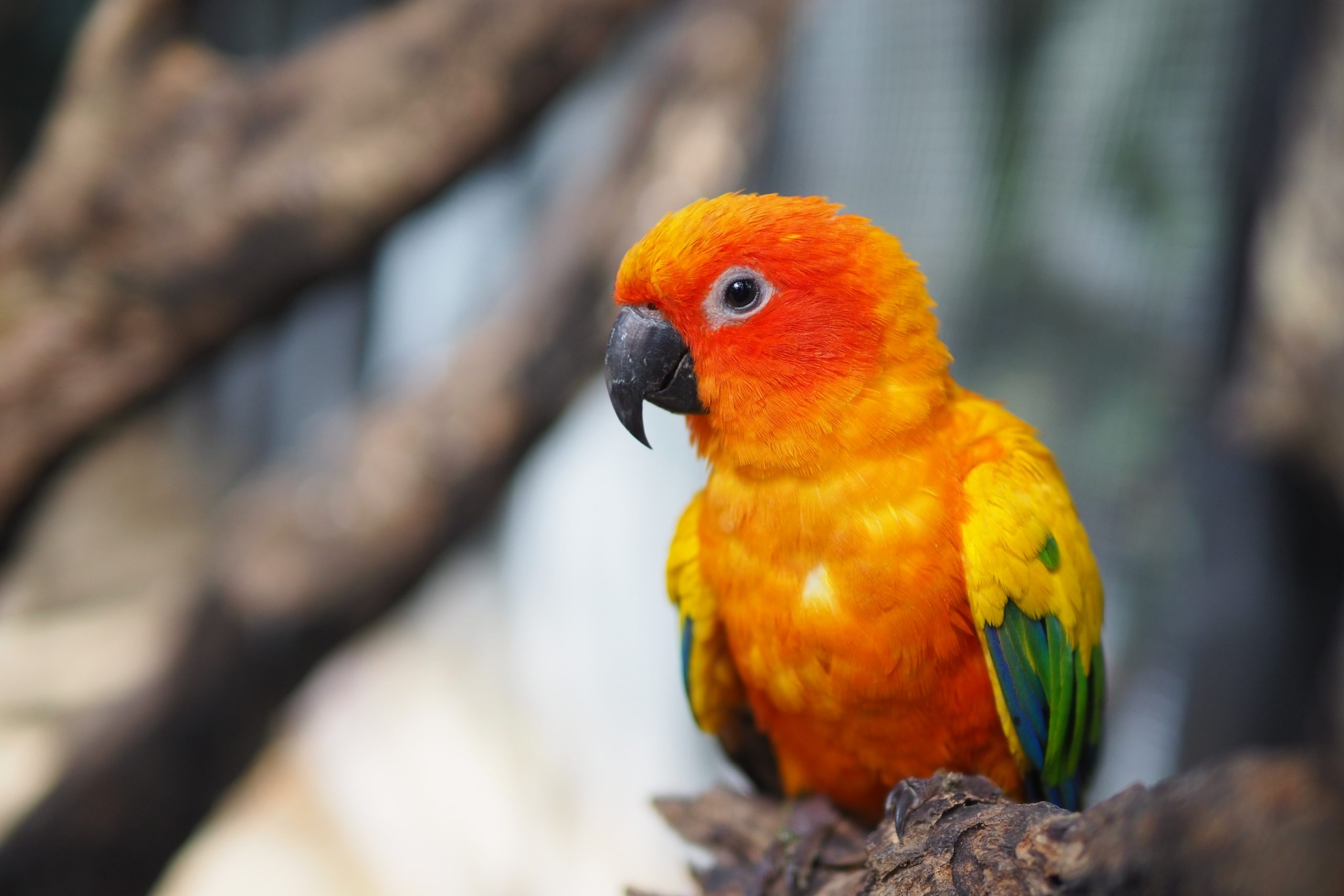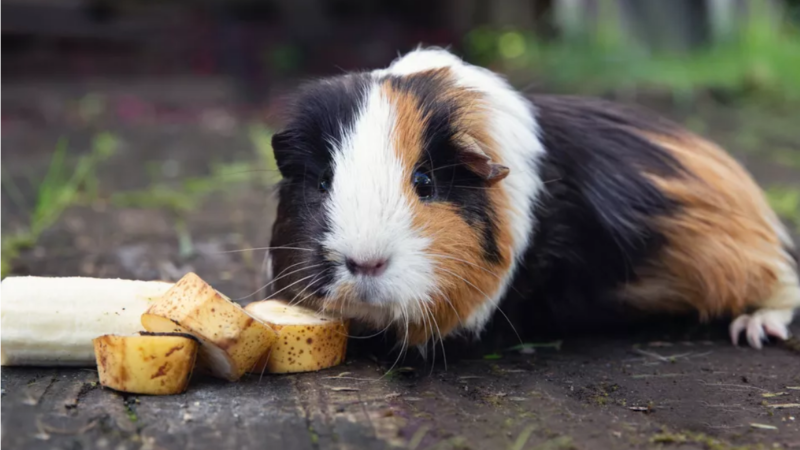Types Of Conures You Can Keep At Your Home

Have you ever heard about the conures? Conures are a diversified and loosely defined group of small to medium-sized parrots. The conure is well-known in the world of parrots. There are around 40 types of conures that make the conure family the most loved in the world of parrots. All the types of conures are classified into a few genres. In this article, you will find all the different types of conures that you can keep at your home.
Types of Conures
Conures are one of the smartest birds that you can keep at home as pets. Among the forty types of conures, we are going to tell you about the prominent genus and types of conures.
Aratinga Conures
Aratinga is one of the most prominent genera of Conures. There are nearly six diverse species and multiple subspecies of Aratinga. This genus is broadly popular in South and Central America, Mexico, West Indies, and Central Argentina.
The Aratinga species reside in every kind of habitat, such as tropical rainforests, sands, savannahs, hills, and sea. Moreover, among the 25 species, only some are loved like:
Sun Conure
Have you ever seen a baby sun conure? If not, trust me, they look amazing. The Sun Conure is also known as the sun parakeet and is 12 inches long. Sun Conure is one of the most loving species of the Aratinga genus. It has strikingly different yellow plumage that reflects its bright, vivid colors. Sun conure bird appears like a color pallet because of its bright orange face and belly, and green wings (Source).
The baby sun conure is known to be the most petted Aratinga conure. Because they are easy to train and comical, you can keep them at your home as pets. The sun conure bird primarily hails from the South American region. However, they are favorite and common among the breeders across the world now. The breeders usually call the Sun Conures as Yellow-factor sun conures; after the time, there is a Red-factor sun conure parrot.
The baby sun conures are of a curious nature that makes them acquire anything quickly. For an apartment dweller or a beginner, the sun conure bird seems to be the noisiest. If you are a beginner, you might feel a bit difficult initially because of their shrill voice.
Jenday Conure
The Jenday Conure is also commonly called Jandaya Parakeet. From head to tail, they are 12 inches long. They are yet understood to be a subspecies of the sun conure parrot by several comparable markings and colors. This subspecies hails from the forests of varied regions of Brazil. Also, they are popularly found in the wild; however, these types of conures are extensively available to the breeders. In pet trading, the Jenday conures are also known as yellow-headed conures.
Nanday Conure
These conures are hailed from several areas of South America. The Nanday Conure is known as the relative of the sun conure. It is 12 inches long and is likened to several pet lovers. The bluish-green collar, black beak, and face mask on the paper chest on the different light green plumage match with no different parrot species.
There are various hybrids of the Nanday conures, the Sunday, Sun conures, and blue-crowned conures.
Blue-crowned Conure
The blue-crowned conure falls under the additionally distributed genus known as Thectocercus. These are the solitary species of the mini genus inside those main Aratinga genera and are about 14.5 inches long. Blue-crowned can be seen with predominantly green-colored plumage and the blue crown, ears, cheeks, and forehead. Few times, a slight blue tinge can be seen upon the breast feathers of these birds. These birds belong to South America and are a famed pets due to their talkative nature and care ease.
Sulphur-breasted Conure
The sulphur-breasted conures are 11.7 inches long. These types of conures usually have green suffusion on their yellowish plumage on the underparts, mantle, and underwings. They are commonly found in the regions that bear the Amazon flow in the savannahs of Suriname and Brazil. The regions of the sun conure parrot and Sulphur-breasted conure overlap with each other.
Other Aratinga Conures
Other than the above discussed Aratinga species, there exist more conures such as Dusky-headed Conure, Golden-capped Parakeet, and the Aratinga Vorohuesis, which is now extinct.
Pyrrhura Conures
This genus incorporates nearly 22 species, including several subspecies. As compared to the cousins of the Aratinga genus, the species of this genus is comparatively smaller in size. Painted conure is the smallest conure, and it relates to this genus itself. Another differentiable feature of the species that belong to this genus is their level of noise. Being the more reticent genus against the disruptable ear-rending Aratinga genus.
Some of the popular species of this genus include:
Green-cheek Conure
These are the natives to the woodland and forests of South America. Green-cheeks are the most loved and popular
, mostly among apartment dwellers. From head to tail, these types of conures are nearly 10 inches long. They generally have a complete green plumage. The tail is red, and the wing feathers are blue.
With popular color mutations and five subspecies such as Cinnamon and Pineapple Conure, they furnish a big list of the alternatives to select the companion birds. The mischievous personality and quiet nature of the green-cheeks have made them the most loving pet across the globe.
Maroon-bellied Conure
The maroon-bellied conure is the natives to the woodlands and edges of Argentina and Brazil. These are about 10-11 inches long and are a small species. Maroon-bellied is enclosed in a green plumage as they have a distinguishing maroon-colored patch on their bellies. The neck and breast are scaly with the markings of yellow-green color.
The Maroon-bellied conure is also named the Brown-eared Conure because the off-white color on their ears is washed with brown color. Moreover, these are not pampered as extensively as some other types of conures and can be easily found with the breeders.
Black-capped Conure
The black-capped conure is also commonly known by the name of Rock Conure. These are the natives of the Amazon Basin and the regions nearby Brazil, Bolivia, Peru. They have been announced as the ‘near threatened ‘species with the shrinking Amazons. Rock Conures are small in size, having a length of 10 inches. There is a high demand for these birds because of their quiet demeanor, nature, and social behavior.
Crimson-bellied Conure
Crimson-bellied Conure is native to the Amazon rainforests of Brazil and Bolivia. These types of conures are especially present in the dense forests. Also, these are around 9 inches long and carry a large personality in a small body. However, Crimson-bellied can effortlessly manage to learn a few words quickly and are a good companion for the apartment dwellers. The best way in which you can identify them is to check the silverish-blue collar at the hindneck along with that crimson-colored belly.
Blaze-winged Conure
These are the natives to the woodlands of Brazil, Bolivia, and Paraguay and have been announced as ‘near threatened’ species because of the extreme loss of their habitat.
The Blaze-winged conures are often called the subspecies of the maroon-bellied conure as both of them share some similar markings and colors. However, the dusky crown and the blaze-like red on the shoulders make the Blaze-winged conure stand out. If you are looking to keep these as pets, it would be better to go with some other options.
Rose-crowned Conure
Rose-crowned is the natives to Venezuela of the subtropical and tropical moist forests. Generally, these species have been announced uncommon in captivity. They are small-sized conure parrots enclosed in a green plumage. To differentiate the species from the flock of the other South American species, look for the white primary wing coverts and red cap.
Other Pyrrhura Conures
Other than these popular conure species, there are even some other species and subspecies included in this genus such as painted conure, pfrimer’s conure, rose-fronted conure, red-eared conure, Hoffmann’s conure, Fiery-shouldered conure, grey-breasted parakeet, pearly conure, white-eared parakeet, and Emma’s conure.
Psittacara Conures
Lastly, it was thought to be that these belong to the Aratinga genus. However, there are nearly 14 species that were later on classified under this different genus.
Cherry-headed Conure
Cherry-headed conures are popular as red-masked conures as it is the best talker in the family of conures. These types of conures are usually around 13 inches long, in which half of their longevity is their tail. Usually, they are covered in a vivid green plumage with an enormous cherry or red-colored head. They have some red color on the neck, edges of the wings, and thighs.
Cherry-headed is known to be screamy and quite loud for their interrupted noises. They barely say one to two words as they are not good conure family talkers. However, they are pampered across the world because of their fun-loving nature and playful personality.
Mitred Conure
Mitred Conure is also commonly known as the mitred parakeet, which is a red-green colored parrot. These types of conures are 14 inches in length. They are known as social species and are popular because of their comical personality. The humid and deciduous forests of Peru, Argentina, and Bolivia and a few high altitudes in the woodlands are the places the mitred conures dwell.
For the apartment dwellers and beginners, the mitred might be quite difficult to handle because of their loud behavior. The unique specialty of mitred conure parrots is their earned status of watchdog, also known as watch-bird because they have the ability to lift the highest alarms on catching a glimpse of the strangers near the home.
Scarlet-fronted Conure
The Scarlet-fronted conure is also known as the red-fronted conure or Wagler’s conure. These are long-tailed parrots. Scarlet-fronted is native to the South American tropical and subtropical regions. They are encompassed with red plumage upon the top of its head that stretches behind the eyes. They are primarily green in color with red thighs. There may be red color sprinkled on the wings and throats.
Other Psittacara Conures
There are various other species such as Nicaraguan green conure, Finsch’s Conure, red-throated conure, and pacific concur, but people do not prefer widely to keep them as pets.
Leptosittaca Conure
This genus includes only one species known as Golden-plumed Conure. It is similar to the Aratinga species as these conure parrots love dwelling in the cloud forests, temperate regions, and temperate highlands. These are the natives of Peru, Ecuador, and Colombia and are highly threatened because of their natural habitat loss. People demand to keep them as pets; however, it’s unfortunate to keep them because of their presence in smaller numbers.
Cyanoliseus Conure
These are another monotypic genus that includes only one species, which is named Patagonian Conure. These Cyanoliseus are also known as burrowing parrots because they are adored as pets because of their ability to mimic. The best advantage of having them as pets is that they are a kind of family pet instead of becoming a single person’s pet. Nearly with four subspecies, there is a good numbered list to select from.
Enicognathus Conure
The genus includes two species and a few subspecies. These species and their subspecies are rarely kept at the homes as pets. The names of the two species are Slender-billed Conures and Austral Conures.
Guarouba Conures
It is a monotypic genus in which the beautiful golden conure falls over. It is also commonly called as Queen of Bavaria. Moreover, they are enclosed in a vivid yellow plumage and only a little green at the tips of the wing feathers. These are the natives of the Amazon Basin rainforests. The Golden Conure lies in the threatened species because of its illegal trading and shrinking habitat for decades.
Ognorhynchus Conures
This is the other monotypic genus. There is a yellow-eared conure that makes this genus. Believed to be extinct until two decades before, these were highlighted as surviving when 81 birds were spotted in the Colombian Andes. Moreover, they are fairly long and large, with 17 inches from head to tail.
Final Words
Different conures have different characteristics and specialties which makes them unique and lovable. Now Decide which type of conure did you love the most and would go for keeping them at home as pets. Do share your experience with us by dropping a comment.






